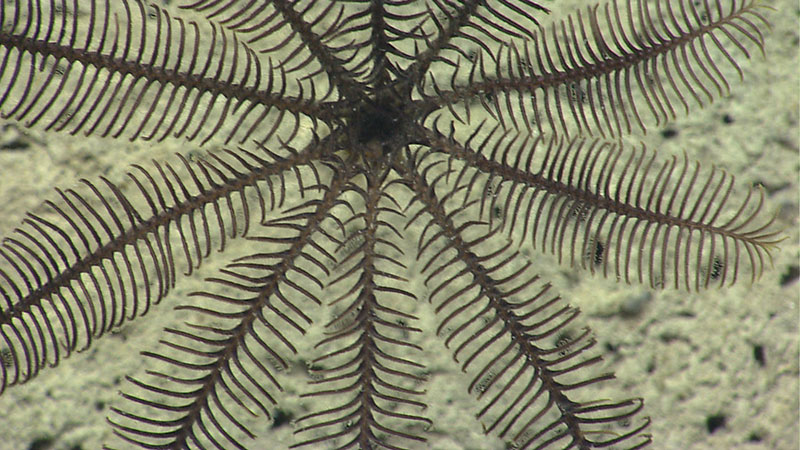Dive 14 was conducted deep in Block Canyon, exploring the geomorphology and benthic communities on the east canyon wall from a depth of 2,131 meters. Upon reaching the bottom, the remotely operated vehicle Deep Discoverer (ROV D2) discovered soft sediment composed of silt and clay scattered with medium size boulders. Overall, few fishes and megafauna (animals visible through imagery) were observed, and sessile (stationary) fauna were sparse, including stalked crinoids, throughout this dive. In contrast, brittle stars and white sea urchins were abundant. Extensively bio-eroded mudstone boulders and blocks with a notable lack of faunal colonization were documented. A few small cup corals were attached to the sides of the blocks, and octocorals and glass sponges were the dominant fauna. D2 reached the base of the canyon and continued to move up slope along a wall feature appearing younger, weaker, with portions of the surface showing collapsed features, and extensive debris fields were noted at the base. As the ROV continued moving up slope to the top of the wall, fewer attached fauna were noted on the wall surface. After the sedimented top was documented, D2 transited down slope toward another promontory. Octocorals were observed on the wall surface at 2,087 meters and several cup corals were encountered under a small overhang. D2 continued to survey along a contour across the promontory toward the end of the dive, where brisingid seastars were abundant and facing east into the current. The ROV left bottom at a depth of 2,062 meters.
